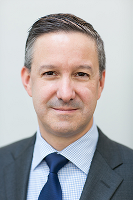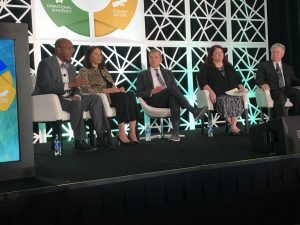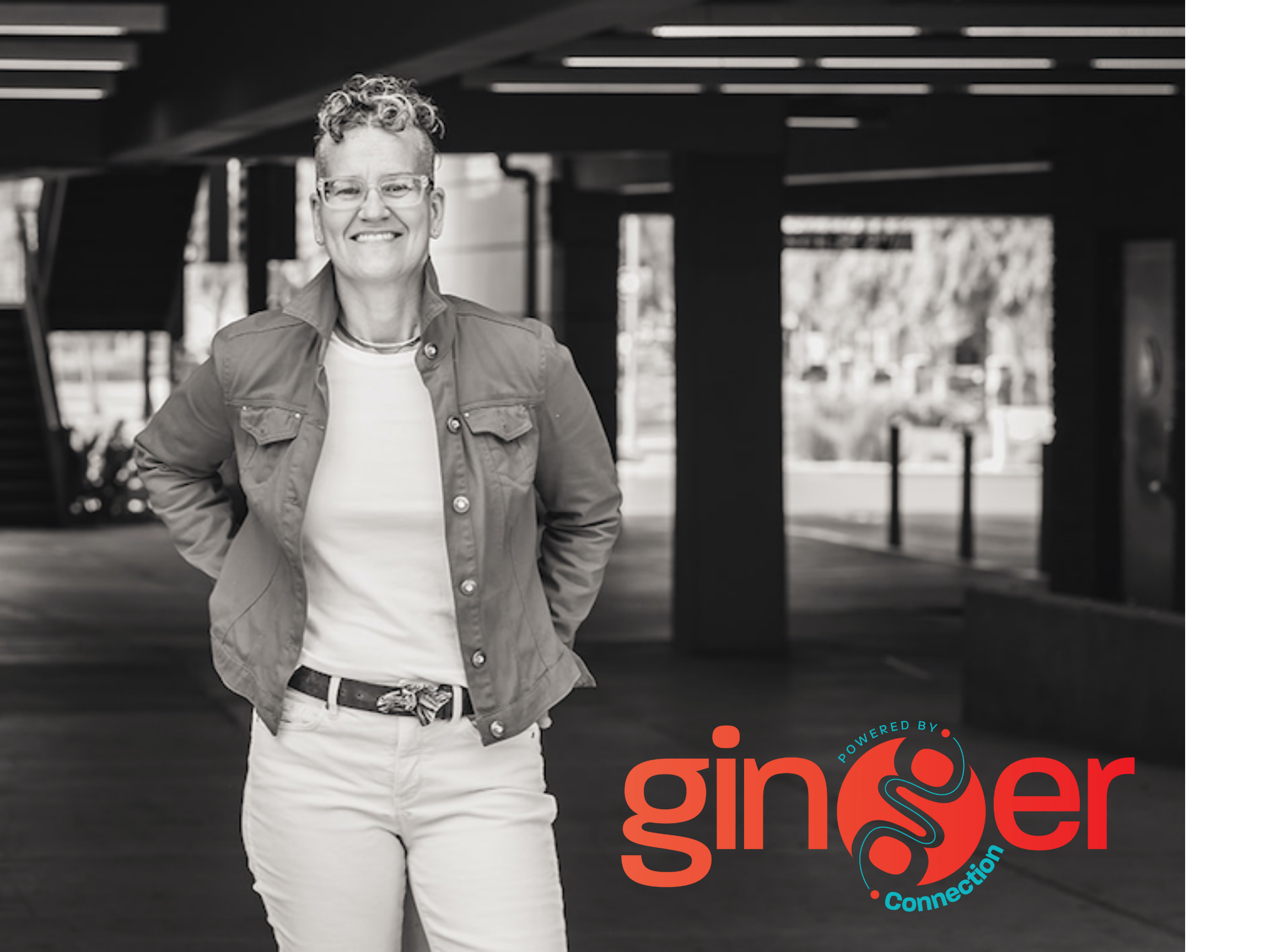Home » 2021
Yearly Archives: 2021
Beyond COVID: A SEM Perspective
There has been so much discussion about “getting back to normal” or creating “the new normal” during these pandemic times. What we know is that, with past pandemics, we have seen the upending of critical structures, such as health systems, economic life, socioeconomic class structures, and race relations. (De Witte, 2020). The impacts have included the way our institutions and communities operate, as well as how family members interact with one another. Today, I find myself wondering what the impact will be on post-secondary education and how it will adjust to whatever normal that may emerge following the COVID-19 experience.
A short time ago, I had the pleasure to convene a webinar panel discussion, Coming Out of COVID, in which four enrollment leaders from the U.S. and Canada shared their views on how post-secondary institutions will approach life after the pandemic. A common thought was the need to develop a sense of urgency on campus so that the pinnacles of SEM can be maintained (institutional wellness, operational efficiency, and student success). Some of what they said also touched on these topics:
- Communications, communications, and more communications
- Flexibility
- Finding the right balance between online and in-person student experiences
- Supporting the staff who serve at the student touch points
- Variable impact on different student populations, and that one process may not work for everyone
- Affordability, with many students left with financial challenges due to the pandemic
At the recent American Association of Collegiate Registrars and Admissions Officers Strategic Enrollment Management Conference (the first in-person conference I have attended in two years!), we heard from our keynote speakers on this topic. Here are a few highlights:




- Dr. Gregory Fowler, president of University of Maryland Global Campus, called on us to “improve end-to-end the student experience.” He challenged us to cultivate human skills, recognize that learning is everywhere, and educational institutions need to support the learning that people need across their lifetime.
- Jeff Selingo, author of two New York Times bestsellers , College (Un)Bound and There is Life After College, and the new book Who Gets in and Why: A Year Inside College Admissions (which he signed a copy for me!), described the student experience as about learning “how to negotiate relationships.”
- A higher education panel (Dr. Monica Parrish Trent, Achieving the Dream; Dr. Dhanfu Elson, Commplete College America; Dr. Kevin Pollock, Central Carolina Technical College; and Laura Clark, Virginia Community Colleges) spoke about the importance of supporting learning and student success across all student demographics, with a particular focus on those who start their post-secondary learning in community colleges.
- Ginger Johnson spoke about “At the Table of SEM,” we need to move from networking to connecting; that by connecting with each other, we can truly transform our learning organizations. Specifically, she called on us to 1) seek alignment as a way to transform our institutions and not just change them, 2) keep things simple by being productive while being “seen, valued, and heard,” and 3) support belonging by “always having time to connect” with one another. Ginger graciously left us with signed copies of her book, Connectivity Canon: Why and How to Connect with People on Purpose with a Service Mindset.
Pulling all of this together and reflecting on what our new normal will become, I find myself being optimistic regarding all the things we can do in higher education. It also makes me return to my teaching philosophy, Teaching for Learning, in which I describe education from the learner’s perspective; that our task is to create “educational environments that enhance learning and by engaging students individually in ways that inspire them.” This can best be done when we attend to the SEM trilogy of student success, institutional wellness, and operational efficiency while taking into account our takeaways from the pandemic.
I can hardly wait to see what we come up with!
-Clayton Smith
De Witte, M. (2020). Past pandemics redistributed income between the rich and poor, according to Stanford historian. Stanford News. https://news.stanford.edu/2020/04/30/pandemics-catalyze-social-economic-change/
Moving Toward the Re-imagined University
Higher education may have been forever changed by the COVID-19 pandemic.
A Pearson Global Learner Survey (2020) found that of three, out of every four, global learners believe that “education will fundamentally change as a result of the pandemic” (p. 5) and colleges and universities will fundamentally change. Most think that online learning will be part of the university student experience post-pandemic. And, interestingly, trust in education is rising as education systems receive higher marks than ever for quality, despite all the disruption resulting from the pandemic.
One educational consultant, Marguerite Dennis (2021), commented recently that the pandemic experience has highlighted a number of issues of concern. Some of these include rigid enrolment procedures, poor retention rates, lack of alignment between academic credentials and employable skills, mental health needs of students, space utilization, and relationships with students before and after graduation. Dennis believes it is time for higher education to create the “reimagined university.” Reimagined universities would be led by chief executives who have both the vision and ability to champion new ways of leading their institutions and can lead their institutions to embrace life-long learning.
The University of Windsor has begun to embrace this challenge. Dr. Robert Gordon, president and vice-chancellor at the University of Windsor recently commented,
It’s going to be a different world when we go back to some of the ‘new normal.’ There are going to be different and heightened expectations of how people interact with one another, but I think its going to be appropriate for us to make sure that we’ve learned from this and that we can adopt new approaches to how we support our institution through those lessons learned.
Mighton, 2021, p, 23
One pathway to consider comes from the world of strategic enrolment management (SEM), which has helped institutions face the challenges that have come our way previously. We have seen natural disasters, economic recessions, and changing demographics. By applying SEM principles, we have successfully led our post-secondary institutions toward enrolment health and student success.
The core SEM purposes include:
- Creating a data-rich environment to inform decisions and evaluate strategies that support strategic dexterity and identification of scenarios;
- Establishing clear goals for the number and types of students needed to fulfill the institutional mission and building options and scenarios;
- Promoting students’ academic success by improving access, transition, persistence, and graduation;
- Promoting student and institutional success by assuring effective academic program planning and assessing options to match need and demand;
- Improving process, organizational and financial efficiency and outcomes; and
- Increasing communication and collaboration among departments across the campus to support healthy enrolment and a healthy institution.
Smith and Kerlin (2020) suggest pursuing these purposes by using six SEM tools to manage our way through these changeful times. They include systems thinking, link-integrate-extend, strategic dexterity, building scenarios, collaboration, and change management.
The key to unleashing SEM to help our institutions confront the significant challenges that lie before us is to engage in collaborative dialogue across the campus to ensure that each of us can find effective ways to support the development of our re-imagined universities.
-Clayton Smith
References:
Dennis, M. (2021). Imagination and innovation in higher education, bulletin 46. Naples, FL: MJDennis Consultants.
Mighton, D. (2021). The life of a wartime president: Robert Gordon discusses the effects of the pandemic on University of Windsor students. The Drive, 34, 22-23.
Pearson (2020). The global learner survey. London: Pearson. https://www.pearson.com/content/dam/one-dot-com/one-dot-com/global/Files/news/gls/Pearson_Global-Learners-Survey_2020_FINAL.pdf
Smith, C. & Kerlin, C. (2020). SEM Institute. Presented at the 2020 virtual AACRAO Strategic Enrollment Management Conference. Washington, DC: American Association of Collegiate Registrars and Admissions Officers.
Recent Comments